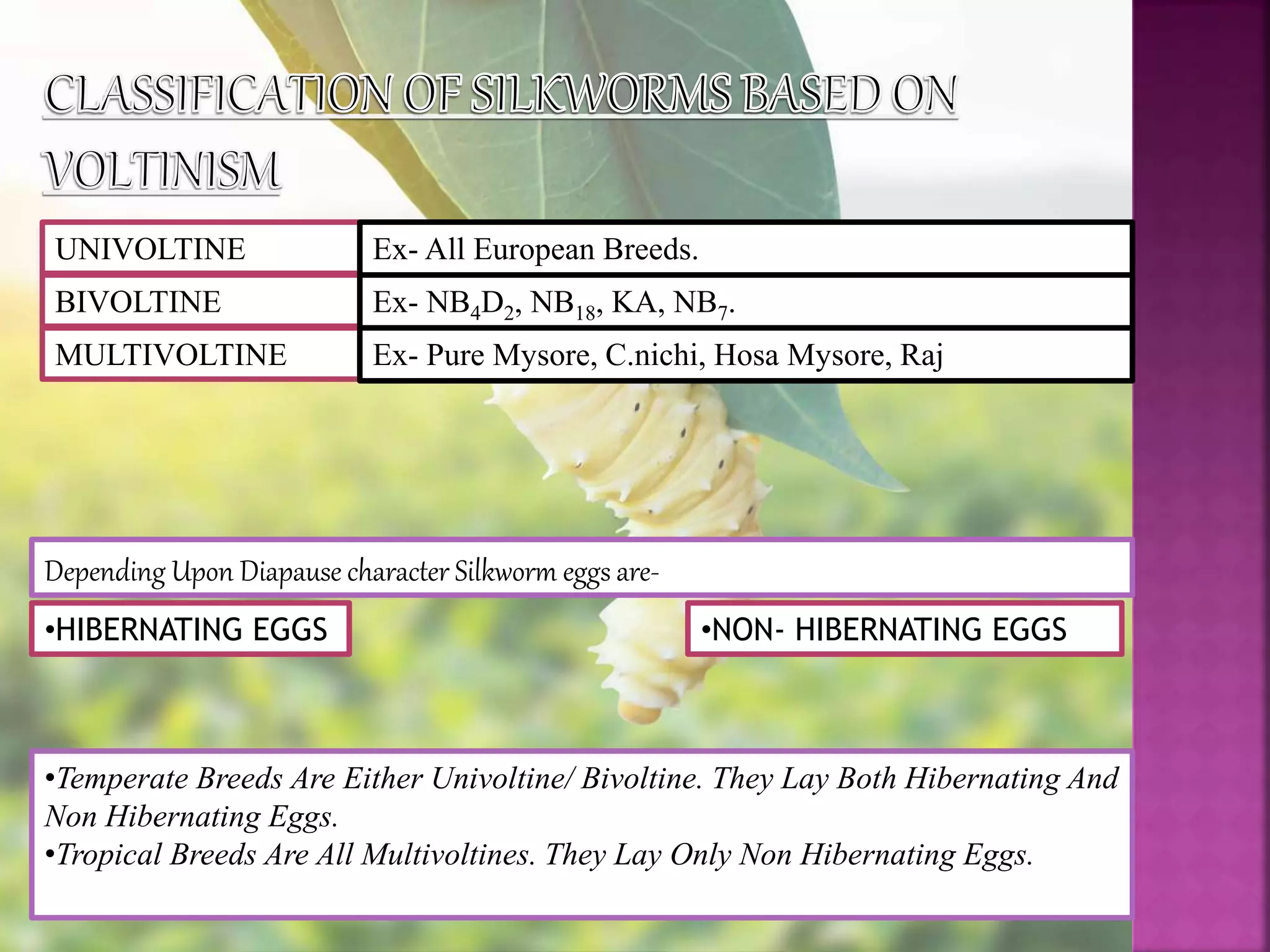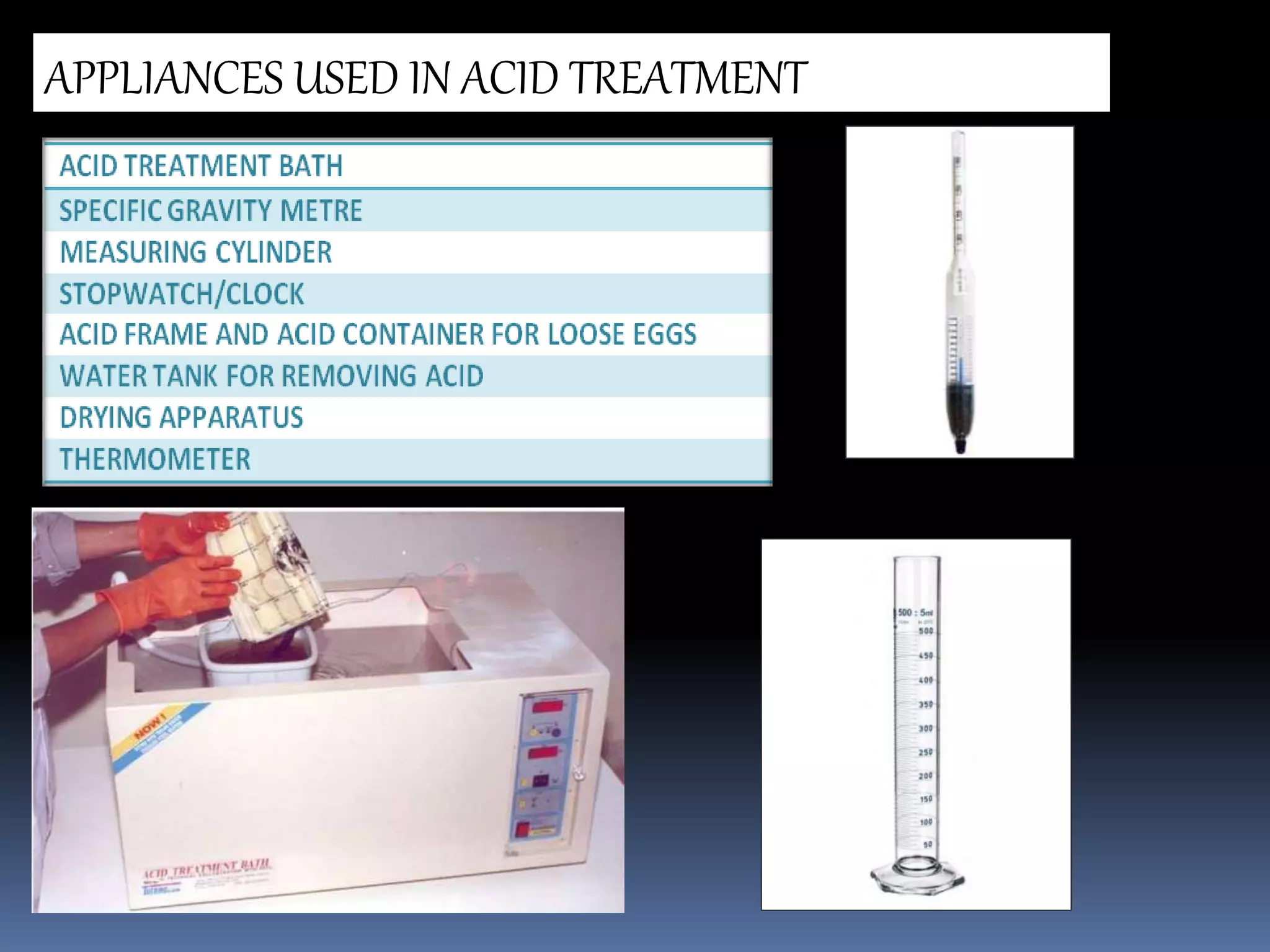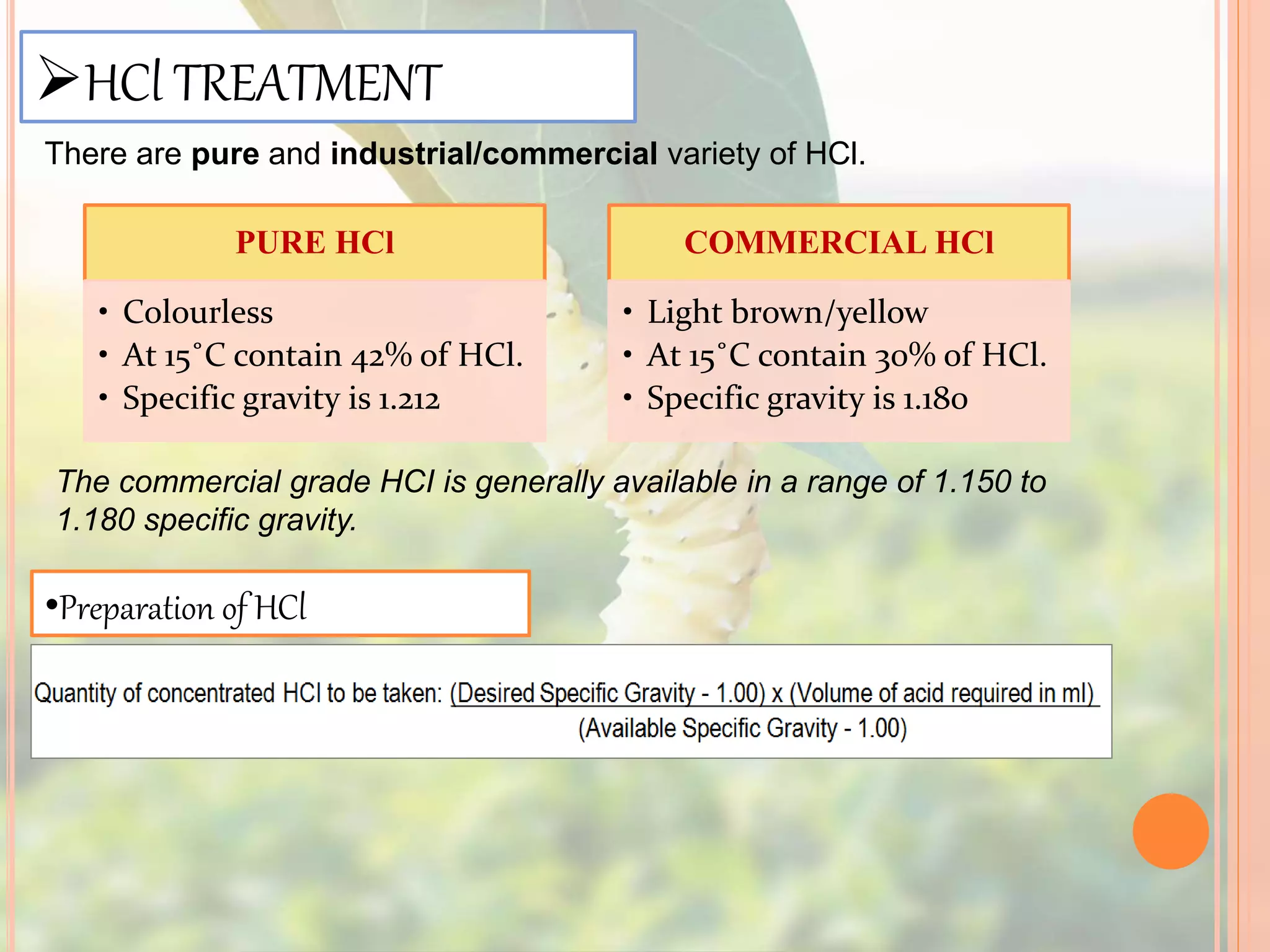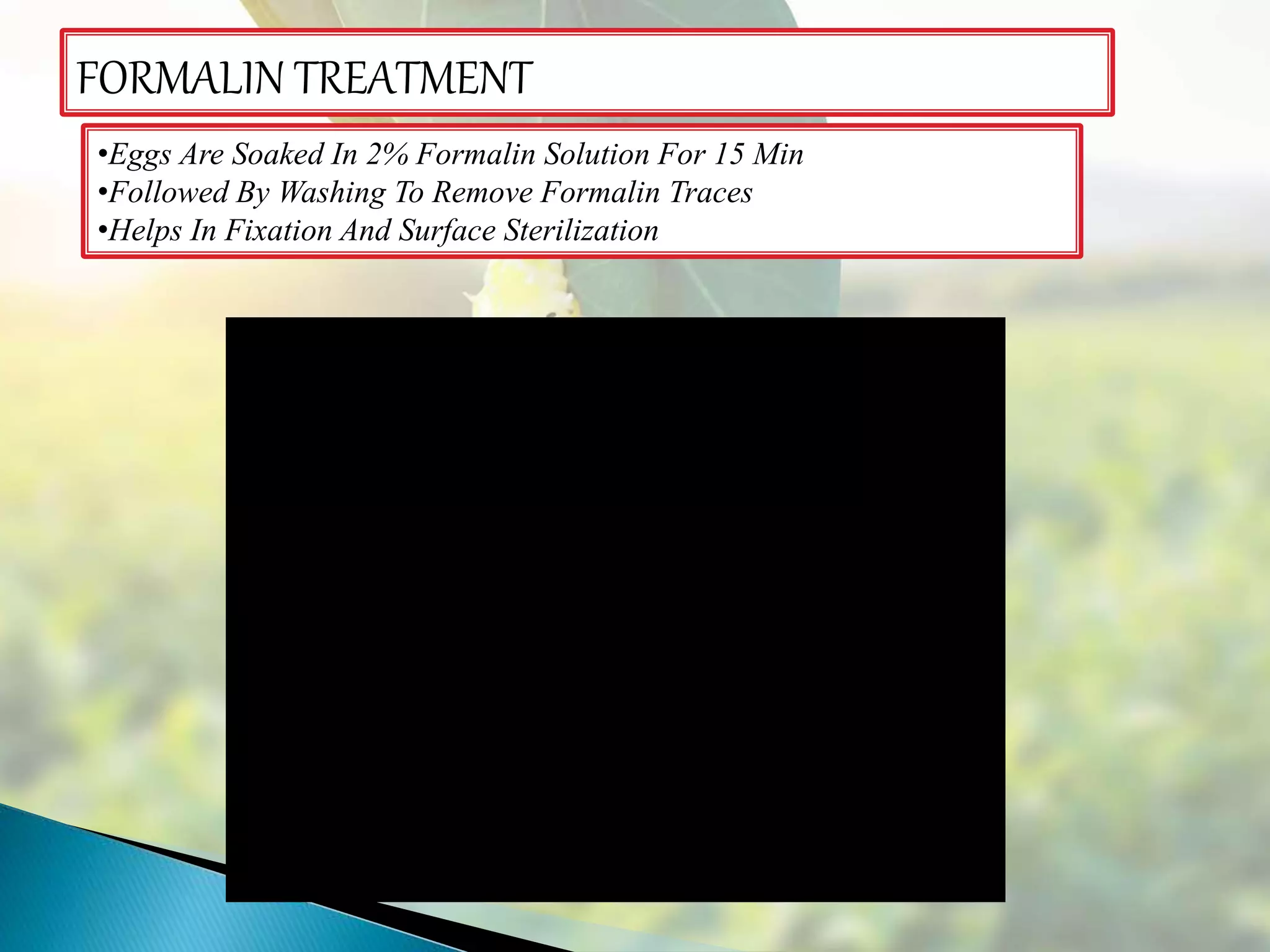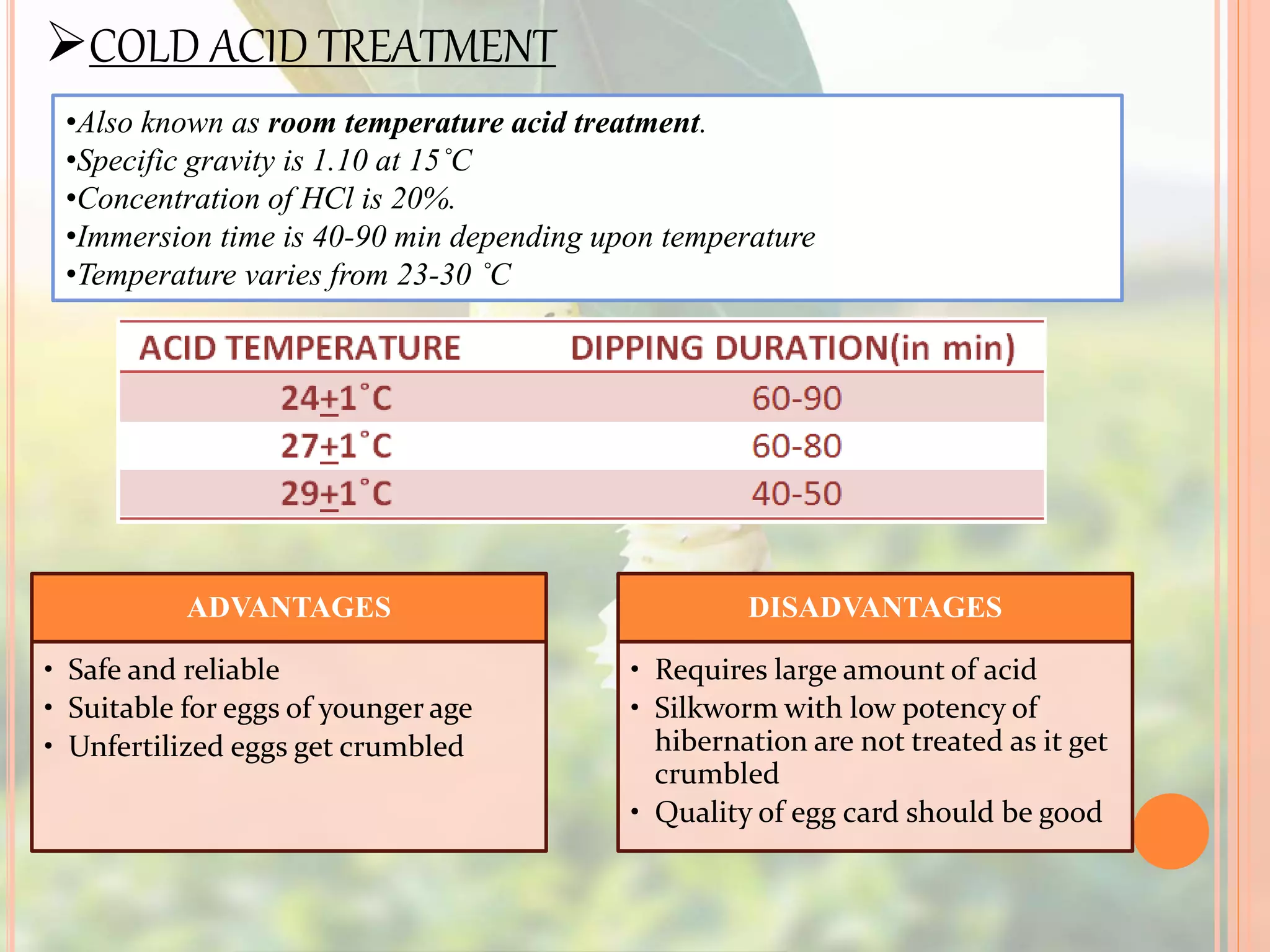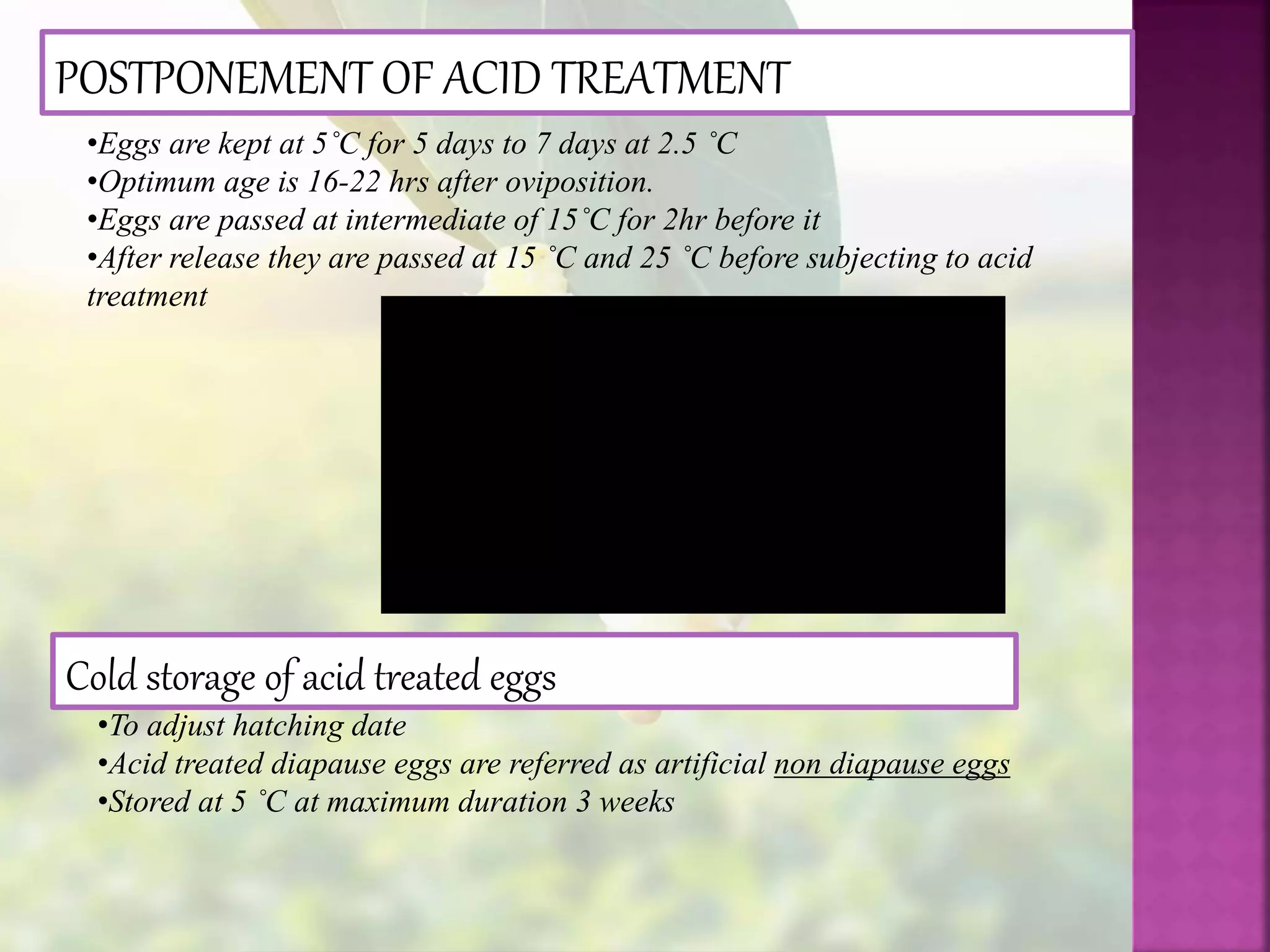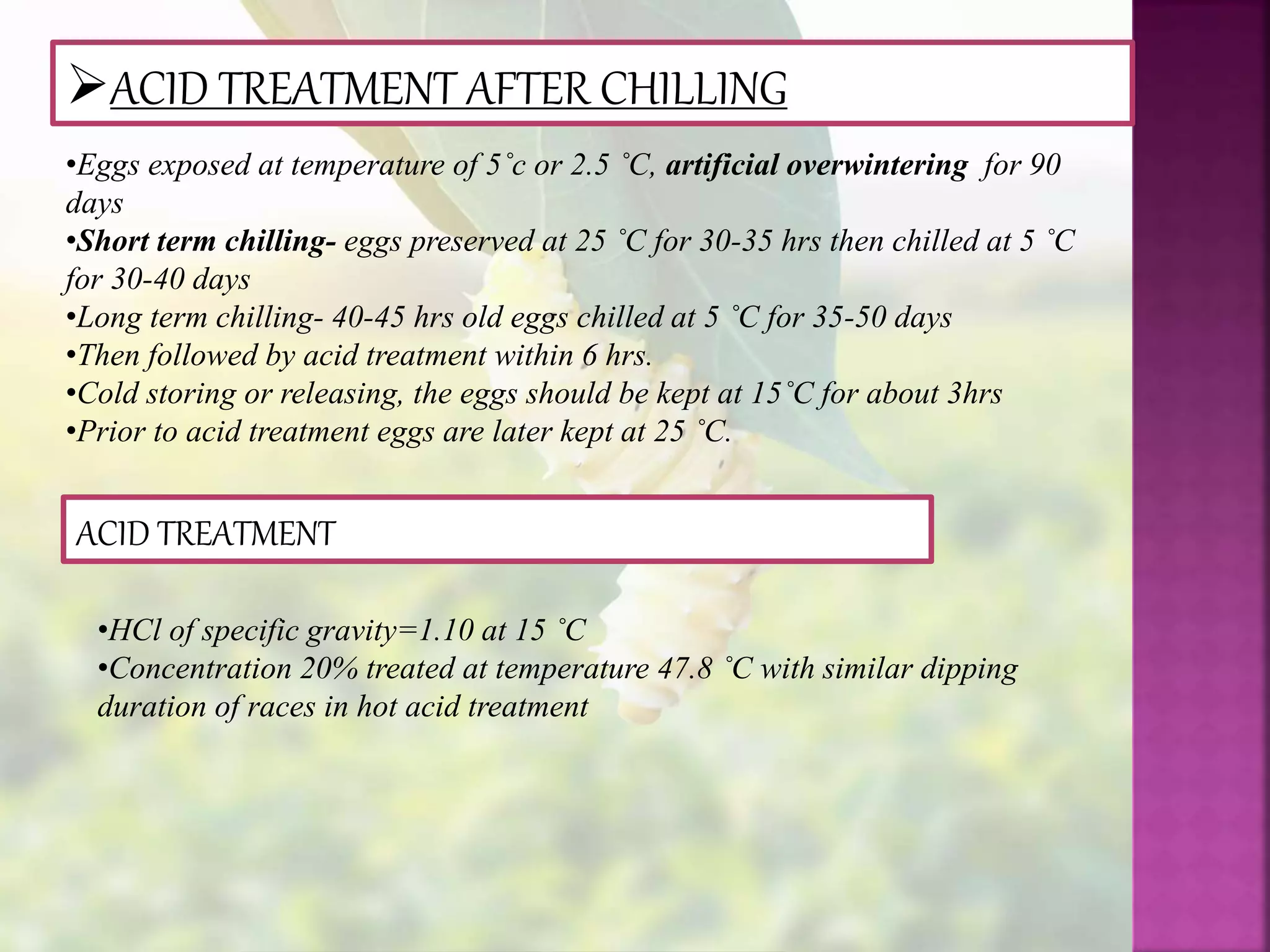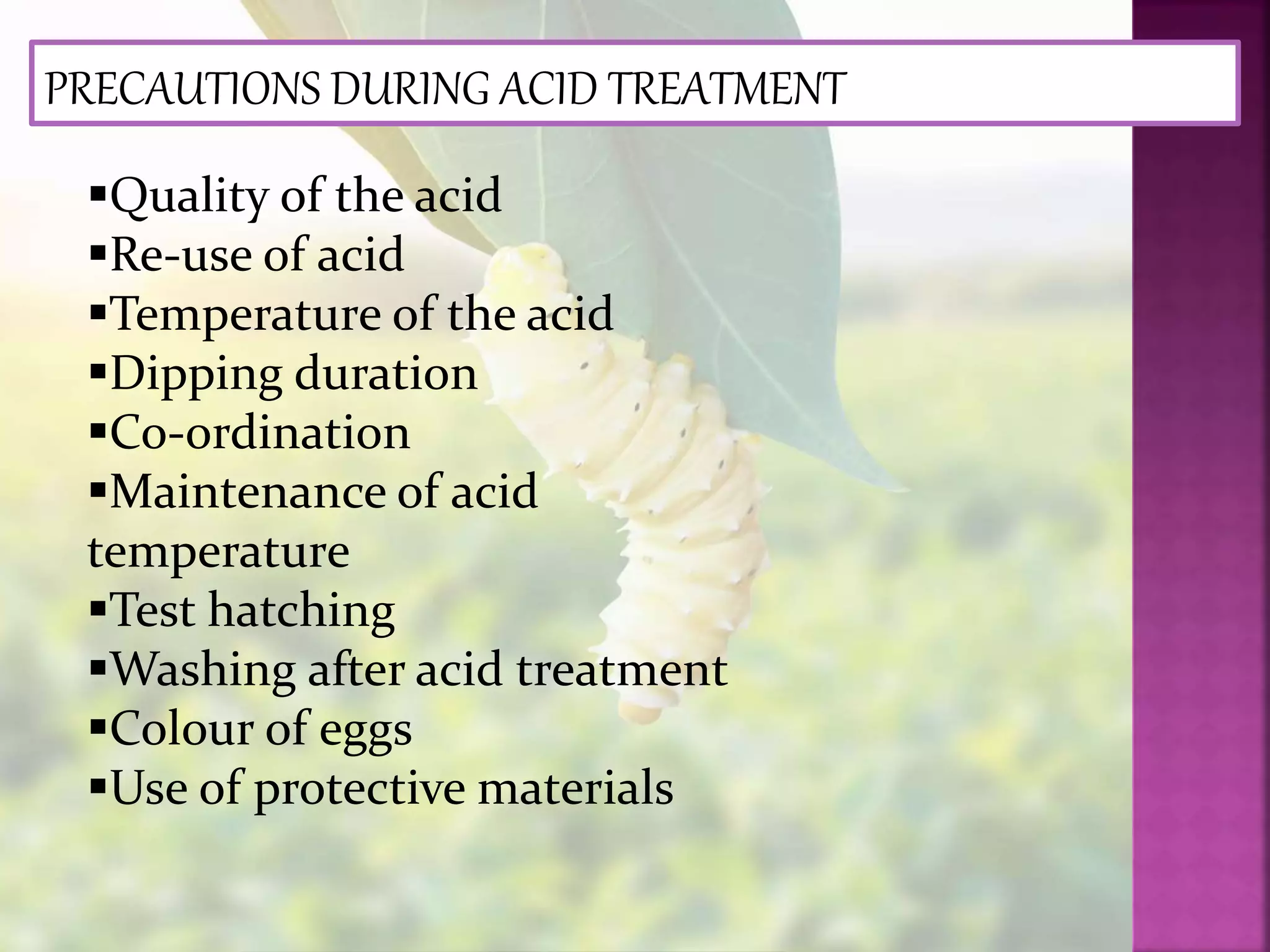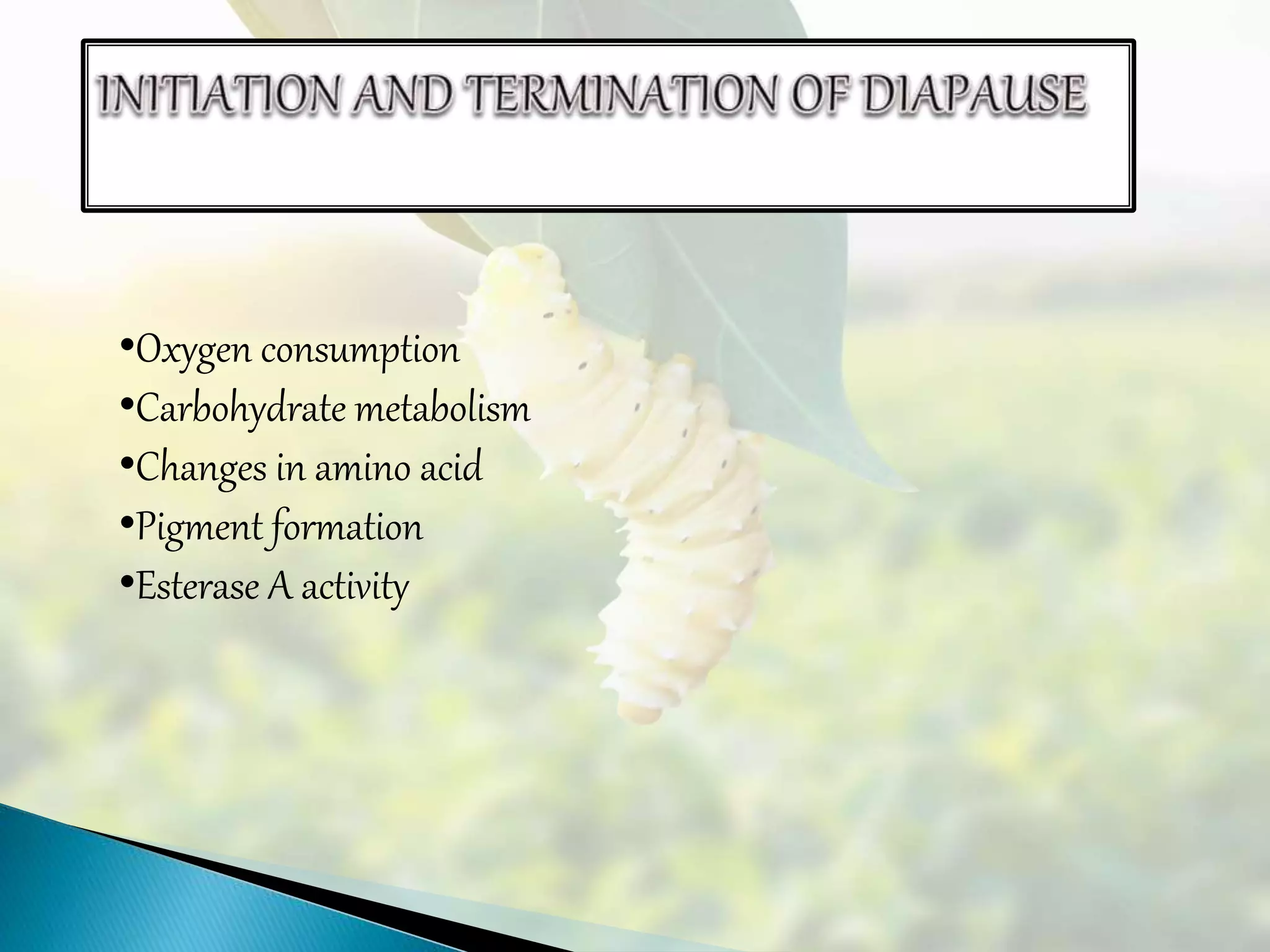Temperate silkworm breeds are either univoltine or bivoltine, laying hibernating or non-hibernating eggs. Tropical breeds are multivoltine and only lay non-hibernating eggs. Acid treatment is used to break egg diapause and turn hibernating eggs into non-hibernating eggs. Inorganic acids like hydrochloric acid (HCl) and sulfuric acid are preferred for acid treatment. HCl treatment involves soaking eggs in either hot HCl solution for 4-7 minutes or cold HCl solution for 40-90 minutes to break diapause. Precise temperature, concentration, and immersion time must be followed to successfully

